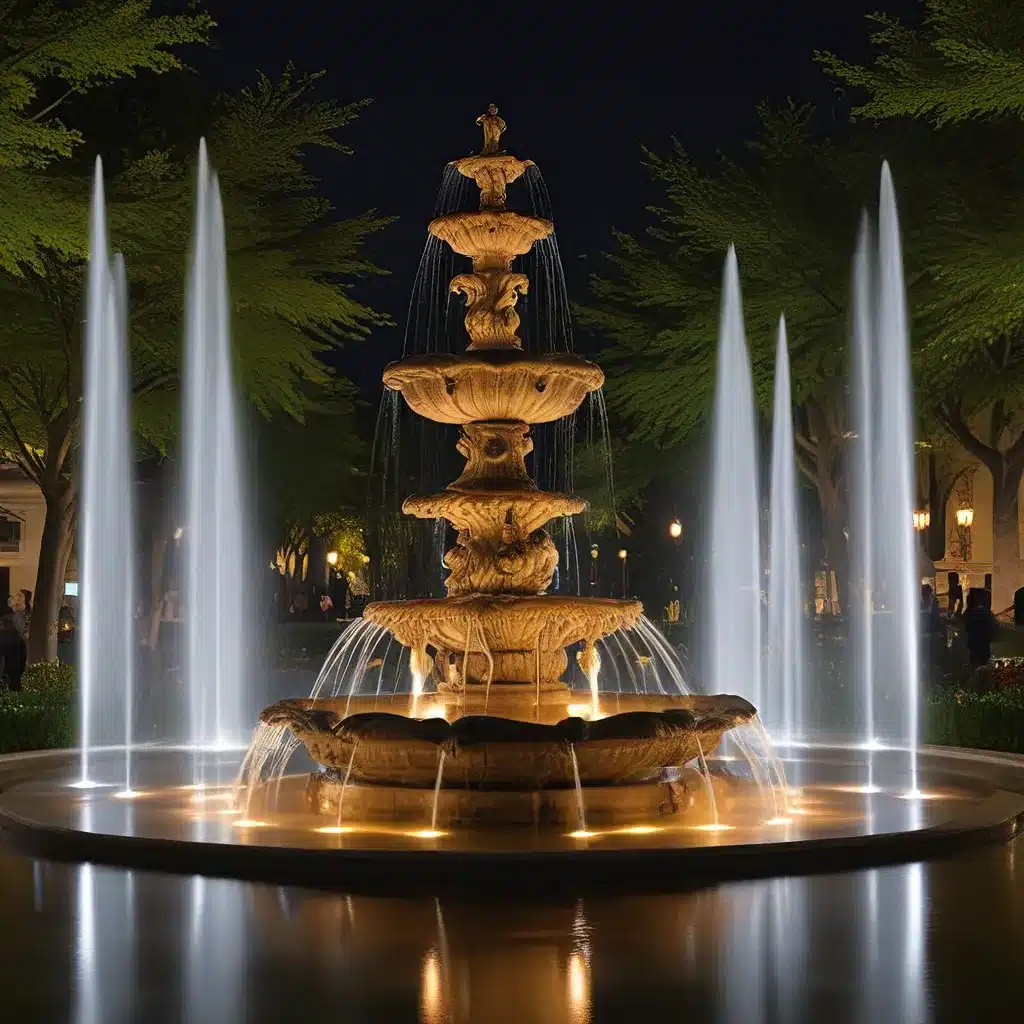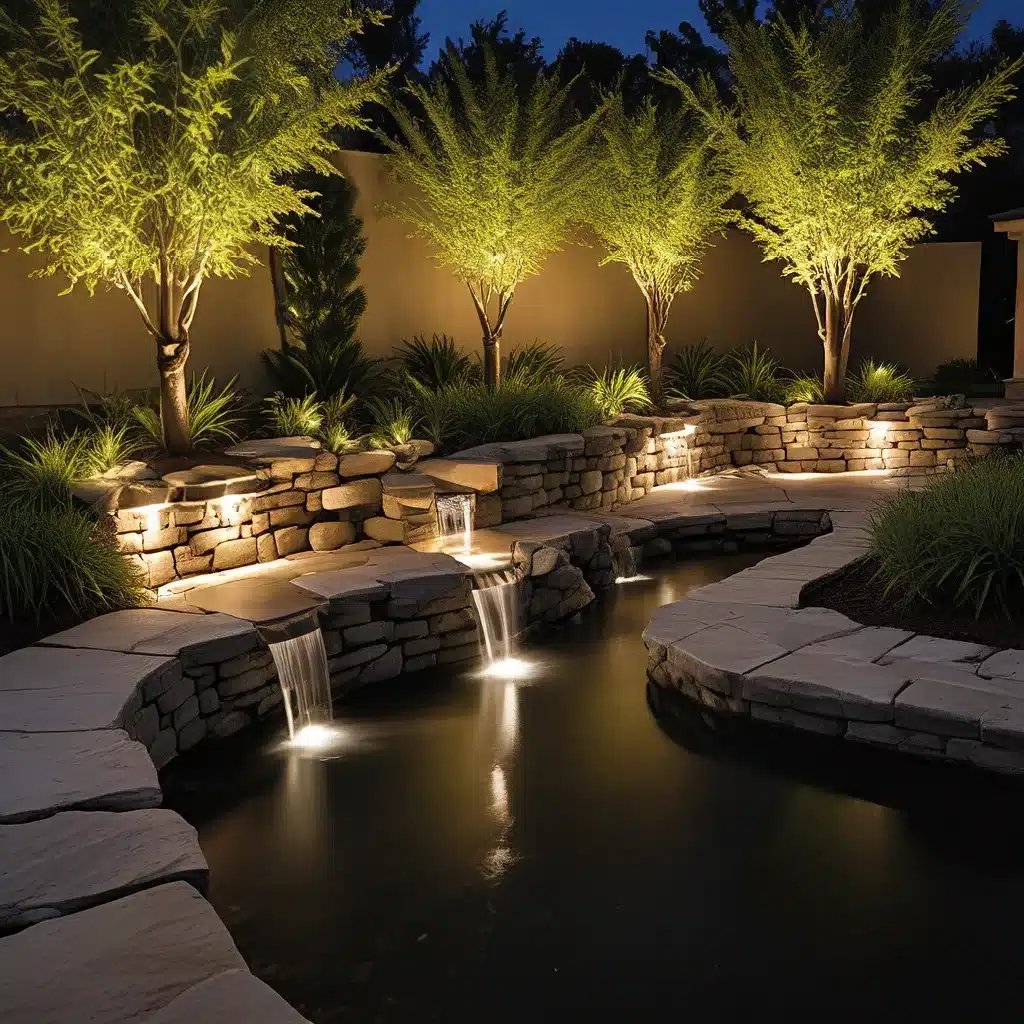
Fountain Design Essentials – Welcome to Fountain Lights
Fountain Design Essentials – Welcome to Fountain Lights

Water features have long been a beloved addition to outdoor spaces, captivating us with their serene movement, soothing sounds, and mesmerizing visuals. But what if I told you that with the right lighting techniques, you could take your water feature to a whole new level of enchantment? Get ready to dive into a world of illuminating possibilities and discover how to elevate your backyard oasis into a true masterpiece of light and water.
As someone who has always been fascinated by the interplay of light and water, I’ve spent countless hours exploring the art of water feature lighting. And let me tell you, it’s a game-changer. Whether you have a pond, a waterfall, or a fountain, the right lighting can transform your outdoor space into a magical and captivating experience.
One of the key principles I’ve learned is that angle is everything. You see, if you position your lights in the wrong spot, you can end up with an unsightly glare on the water’s surface, which can ruin the whole ambiance. But when you get it right, the light dances across the water, creating mesmerizing reflections and shimmering effects that will leave your guests in awe.
Creative Nightscapes has some great tips on this, suggesting that you should “angle your lights away from the feature’s main viewing positions.” This not only reduces glare but also “creates an extra sense of dimension and visual appeal.” Genius, right?
Now, when it comes to the types of lights you can use, the options are truly endless. Let’s start with downlights – these babies are perfect for creating a soft, diffused glow on the surface of your water feature. And the best part? You can tuck them away so the focus stays on the water itself.
Spotlights, on the other hand, are great for highlighting specific elements of your water feature, like a cascading waterfall or a delicate fountain. By placing them higher up and angling the light just right, you can create some seriously jaw-dropping reflections.
But wait, there’s more! If you’re looking to accentuate a waterfall, uplighting is the way to go. This technique bathes the feature in a mesmerizing and dynamic light, making it the star of the show.
And let’s not forget about submersible lights – these little guys can be placed right in the water, providing an enchanting and mysterious glow that will have your guests wondering, “How did they do that?”
Aquascape Construction suggests that when using submersible lights, you’ll want to “select lights that are 13 or even 12 brighter than what you think you need.” This helps combat the natural diffusion of light that occurs in water, ensuring your feature shines as bright as it can.
But it’s not just about the type of lights you choose; it’s also about how you integrate them with the natural elements of your outdoor space. After all, we want to create a harmonious and seamless blend of light and nature.
One of the coolest things I’ve seen is the use of colored lights on waterfalls. By strategically placing these hues, you can “create a stunning effect” and “add to the visual interest” of your water feature. Imagine a cascading waterfall glowing with vibrant blues and greens – it’s like something straight out of a fairytale.
And let’s not forget about the importance of shadows and dark spots. As Fountain Lights points out, these “can create a sense of depth and dimension, making your water feature feel more natural and inviting.” It’s all about finding that perfect balance between light and dark, bright and subtle.
When it comes to lighting your water feature, the key is to “make an effort to angle your lights away from the feature’s main viewing positions,” as Creative Nightscapes suggests. This helps reduce glare and create a more visually appealing experience.
But it’s not just about the placement of your lights; it’s also about considering the fish and wildlife in your water feature. After all, we don’t want to overpower them with too much light or disrupt their natural habitats.
One brilliant solution I’ve come across is the use of motion-activated or timer-based lighting systems. This way, you can enjoy the mesmerizing effects of your water feature’s lighting without compromising the well-being of your aquatic and terrestrial friends.
So, are you ready to take your water feature to new heights of illumination? By strategically placing your lights, experimenting with different types and colors, and harmonizing your design with the natural elements, you can create a truly enchanting outdoor oasis that will have your guests raving for years to come.
Remember, the possibilities are endless, and the journey is half the fun. So go ahead, unleash your inner lighting designer, and get ready to make a splash in your backyard!
Share to :